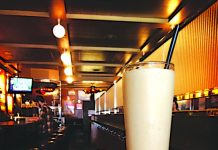
An epidemic is spreading. Step into any restaurant and look around. Just about everyone with a smartphone is taking pictures of their food. Before they even take a bite they’re scrolling through their options of filters and adjusting the angle.
The term “food porn” isn’t exactly new. The colorful phrase was coined by feminist critic Rosalind Coward in her 1984 book Female Desire. However, it wasn’t until the mid-2000s the term went viral.
Profiles on Twitter, Tumblr, and Instagram have been devoted entirely to food porn. The #foodporn hashtag on Instagram alone boasts more than 58 million photos. Listicles featuring some of the best and worst have become a favorite of Buzzfeed. It’s become so popular that Google recently announced it is developing an app that analyzes food photos and calculates the meal’s calorie content.
With so many people snapping food pictures, it’s no surprise some of the photos are often less than appetizing. Even food celebrities like Martha Stewart have been known for posting grainy, overexposed, and downright disgusting photos to social media.
Know someone who has a food-porn illness? Or perhaps you’re asking for “a friend.” For a cure, we sought assistance from local food bloggers and photographers on how to take amateur food porn to pro status.
First of all, make it about more than food; tell a story. “There’s more to food than simply the food itself,” says Joe Hakim, a self-taught photographer and one of the founders of TheHungryDudes.com. “There’s feeling and a mood that can be projected more so than simply taking an extreme close-up of a cheeseburger.” The Hungry Dudes focus on “thoughtful food photography,” with the goal of incorporating a narrative into every photo.
One thing to watch out for is nonfood items in the “negative space,” or the area around the photo’s subject, says Megan DeKok, a food stylist and creator of the food blog TakeAMegaBite.com. An item like a dirty napkin isn’t ideal, but details such as a frosty beer off to the side or a fork on the plate can bring a photo to life. Placement of a cup in the corner, or positioning the plate slightly off frame can also bring a lot to a photo. Balance is more important than symmetry, DeKok says, adding “I also think it important to develop your own style.”
Regardless of personal style, all of the pros agreed that natural light is best, so turn off that flash. “People do want to see things as natural as possible,” says Cybelle Codish, a professional photographer for 12 years who has worked for publications such as Hour Detroit, Rolling Stone and Martha Stewart Bride. “The reality is as long as you’re not using a flash, it’ll still probably look pretty good.”
But natural lighting isn’t always possible in dark restaurants and bars. When the conditions aren’t perfect, editing apps come in handy. “Camera+ is a really, really popular one that helps you quite a bit with low light,” Codish says. Her favorite app for post edits, however, is SnapSeed, an app that’s like professional desktop editing software but on mobile devices. VSCOCam was another favorite among the professionals we spoke with, and, of course, good ol’ Instagram.
But apps can only go so far. And not everything photographs well. “Be selective,” says Joe Vaughn, a professional photographer for more than 20 years and one of the founding photographers for Hour Detroit. He has done countless food shoots for clients such as Food Network, Food and Wine, and Gourmet. When doing food photography, “they might bring out 10 dishes and maybe only three of four of them get into the magazine,” he says. “It’s not that it’s not a good restaurant; it just doesn’t shoot well.”
When snapping pics of homemade meals, try to keep it clean. Codish recommends plating dishes on white, keeping it as clean as possible. “Don’t over-sauce,” she warns. For blended foods like almond butter, and soups and stews, the ingredients can be more visually appealing then the final product. “You can always deconstruct something if you’re trying to get the point across,” Codish says.
Food wasn’t always so hot. “It’s hip now as a subject matter,” says Vaughn. “But 20 years ago you would have been a dork if you were shooting food.”
And while this trend is all about sharing experiences and visual appeal, the one tip all our pros agree on is to just enjoy your meal. “You don’t want to spend 15 minutes taking the perfect shot and then your food’s cold,” Hakim says. Sometimes it’s better to put down the phone and pick up the fork.
|
|
|









